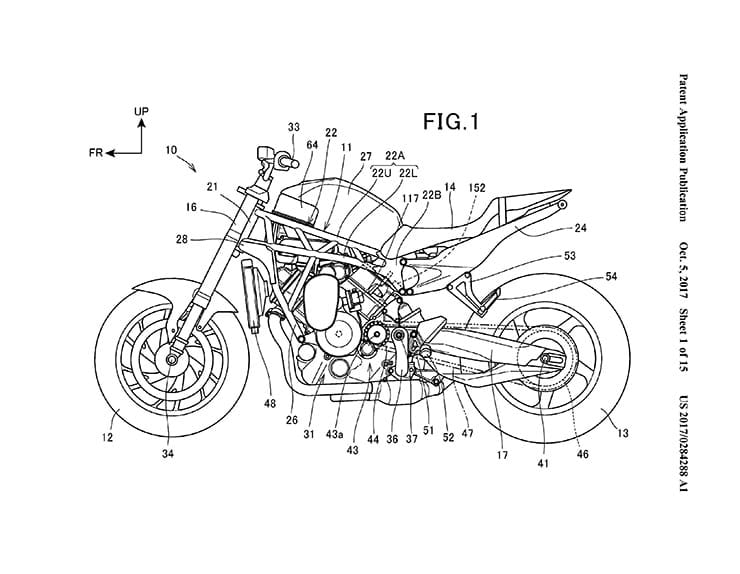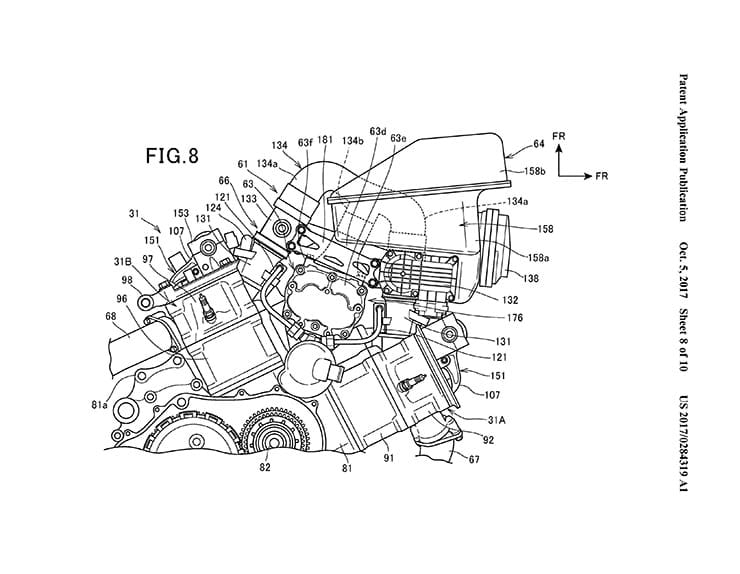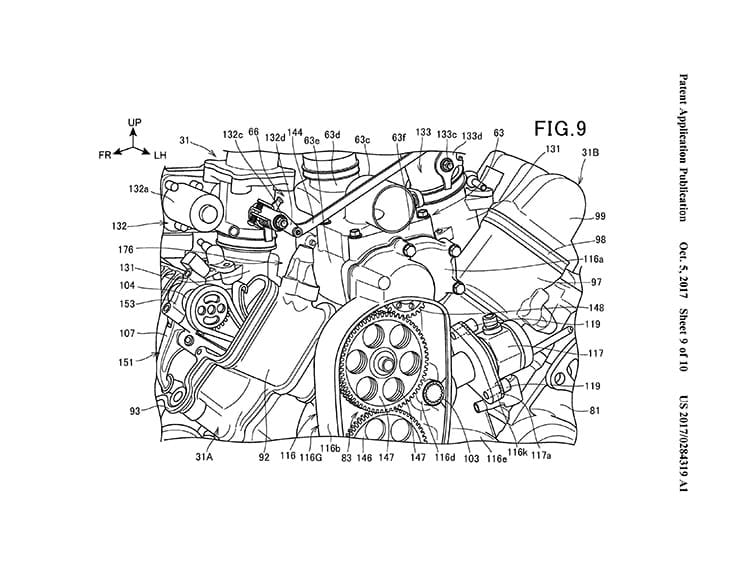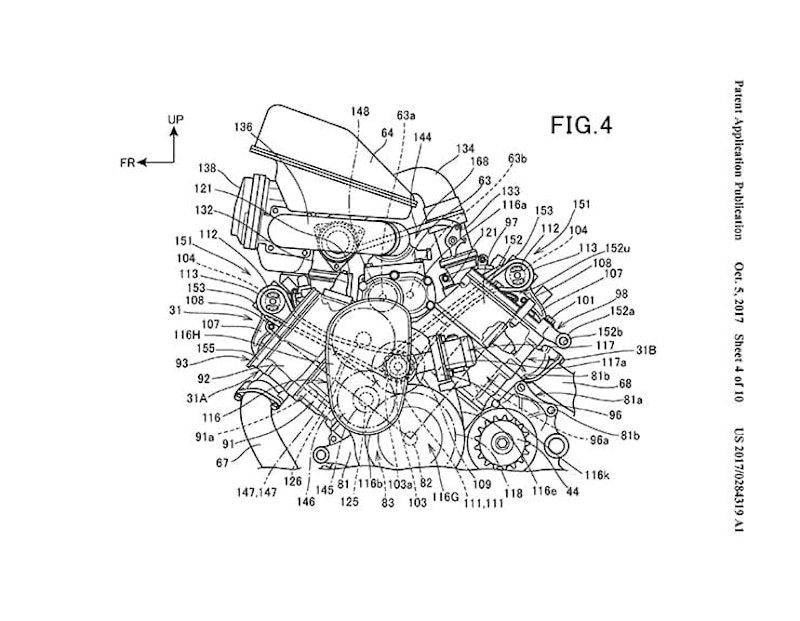Supercharged Honda super-naked on its way!
By Ben Purvis
Motorcycle Journalist
06.10.2017
Supercharging might still be a niche technology in bikes but the idea of forced-induction is gaining traction and Honda may be the next to launch a boosted machine.
At the moment, if you want a supercharged motorcycle your options are pretty limited. Kawasaki is the only mainstream player to have such a bike on the market, and its H2 is still very much an exclusive offering. However, with Suzuki planning a middleweight turbocharged twin derived from its 2013 Recursion concept and Kawasaki promising an extended range of supercharged offerings in the future, the situation is changing.
This Honda is something new, though. Just revealed in newly-filed patent applications, it’s a mid-sized naked V-twin that looks more like a production offering than a crazy concept bike. But there’s a supercharger nestling between those cylinders to give a huge boost in torque and power while keeping the bike light, small and economical.
The engine is what makes this bike special. Here you can see that despite being supercharged it’s an incredibly compact design that’s actually smaller than most normally-aspirated V-twins.
We don’t know its capacity, but it appears to be a mid-sized motor; maybe in the region of 600cc-750cc. But with boost, that could easily equate to the sort of performance that 1000cc-plus super nakeds currently offer.
In the diagram of the engine you can clearly see a supercharger in between the cylinders. It’s gear-driven from the crankshaft via the two large intermediate gears. The supercharger is either a twin-screw or a Roots-type blower – both look similar from the outside and work using a pair of counter-rotating shafts. On a Roots supercharger, the shafts have interlocking lobes that pump air into the engine, while a twin-screw supercharger uses screws to compress the air. Whichever type is used, the effect will be the same; loads of instantly-available torque and a big boost in power.
Interestingly, Kawasaki has used a completely different type of supercharger in its H2. It uses a centrifugal supercharger, which is more like an engine-driven turbocharger, with an impellor that compresses the air.
You can see that the supercharger doesn’t add anything to the external dimensions of the engine. Sited between the cylinder banks it has its inlet and outlet pipes on top. The inlet (numbered ‘63c’ here) is fed from a small airbox, while the outlet (134b) feeds pressurised air upwards into a manifold that feeds two conventional throttle bodies (133).
But the supercharger isn’t the only clever bit of this engine. Honda has also worked hard to make it smaller than a normal V-twin would be.
The cylinder heads are particularly clever. While they have four valves per cylinder, there’s just one camshaft for each bank. That’s something Honda already does on the VFR1200 to minimise the size of its heads, and here it’s taken a step further. To make the heads even smaller, the camshafts are driven via a reduction gear mounted above the crankshaft. That means they can use smaller sprockets on the ends of the camshafts while still being correctly geared to run at half engine speed. The smaller sprockets help make the cylinder heads more compact.
From the rear ¾ angle you can see just how compact those cylinder heads are. A normal four-valve, DOHC head would be far taller and wider; these are so small that they look more like the heads of a pushrod engine.
Cleverly, Honda has sandwiched an aluminium casting between the top of the cylinder head and the cam cover. This casting holds the camshaft in place but also extends from the back of the head to create an engine mount. It means that different engine mount designs could be used without changing the major castings of the heads, cylinders or cases, and suggests Honda intends to use the engine in more than one bike.
That clever engine mount is part of a design that uses the new engine as a structural part of the bike’s chassis. It’s not a new idea in itself, but this image shows how the frame mounts to the front of the engine and to the rear cylinder head, while the engine itself carry’s the swingarm.
The seat subframe also mounts to the rear cylinder head and to the main trellis frame.
Note that there’s a pillion seat and pegs; not the sort of thing you’d expect to see on a pure concept bike. All the drawings in the patent are also particularly detailed, even on components that aren’t important to the actual patented elements of the design, which again points at this being a real-life machine rather than just an engineer’s doodle. There’s even a catalytic converter clearly visible where the exhausts from the two cylinder banks merge into one.
Some parts are clearly missing; there’s no headlight or tail light, no licence plate hanger, no exhaust silencer and no instruments. The mismatched front and rear wheel are also a little odd. But overall the impression is that Honda could quite easily wheel out a bike like this in the very near future.
Share on social media:



